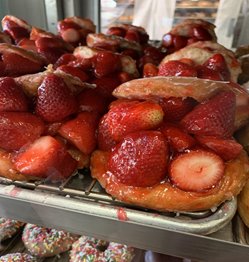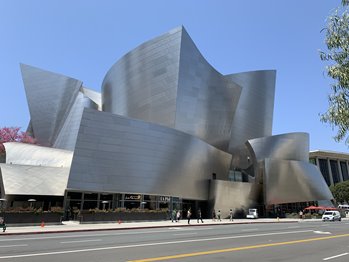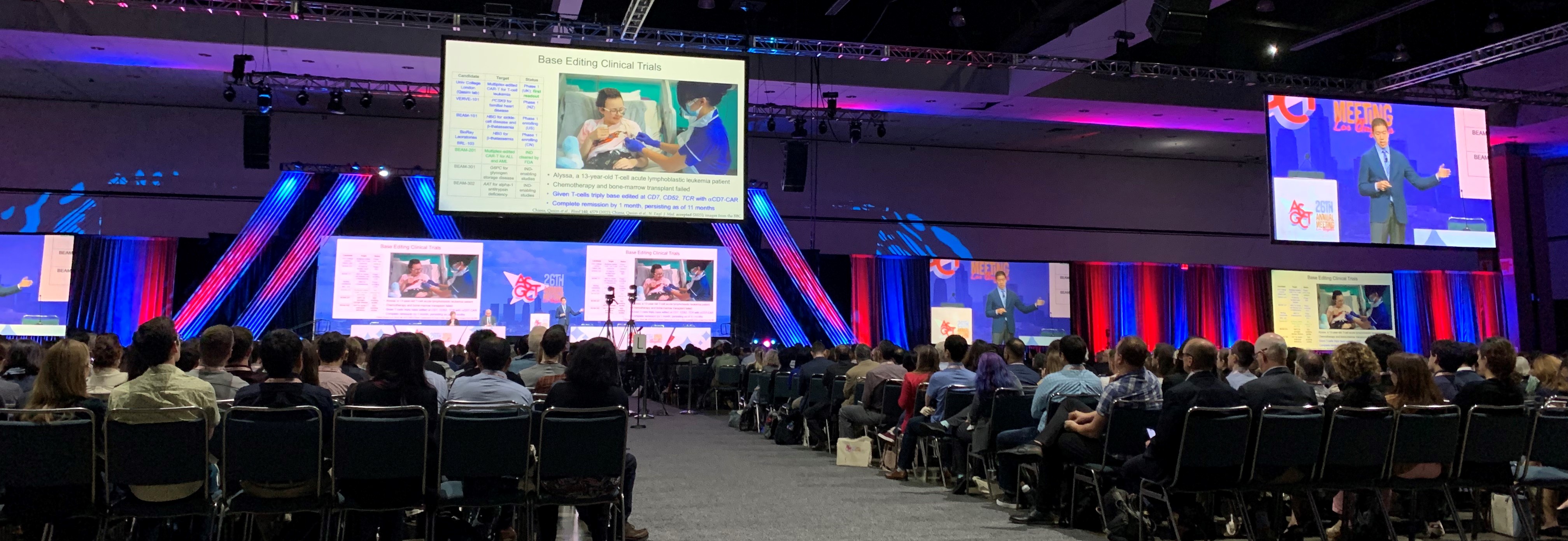A Day at the 26th Annual Meeting
Kenji Rowel Q. Lim, PhD - June 12, 2023
What does a day at the Annual Meeting look like? ASGCT Member Kenji Rowel Q. Lim, PhD, talks about his first day at this year's meeting.
_2.png)
It was Wednesday, May 17. I woke up at 3 a.m., slept for 10 minutes until my next alarm went off, woke up (for real this time), got ready, ate a quick breakfast, then headed straight to the airport. The next few hours went by like a blur—waiting, boarding, takeoff, waiting, eating a pack of complimentary snack mix, sleeping, landing—and before I knew it I arrived at LAX.
Stepping outside the airport, the first thing that popped into my head was, "wow, I’m in LA!" I’ve only ever passed through Los Angeles before, so it was exciting to get to know the city a little better.
Time-check: 8 a.m. I needed to hurry to catch the morning symposium our committee organized for the meeting. Obviously I was already late, but I thought maybe I could catch part of it. According to Google, it was only a 20-30 minute ride by car from the airport to the Los Angeles Convention Center. Doable, right?
 So I rush-walked over to LAX-it, where I booked an Uber to pick me up. Apparently, rideshare drivers weren’t allowed to pick people up in front of the terminals at LAX unless I paid extra, which I didn’t want to do. I was surprised to find LAX-it empty, after all the horror stories I read about it online. I booked my ride easily, no surge pricing, thank you very much, and got to the convention center in half an hour. Did I encounter the infamous LA traffic? Yes, but it wasn’t as bad as I thought. Probably because I’ve seen worse (hi, Asia). Or maybe I was just lucky.
So I rush-walked over to LAX-it, where I booked an Uber to pick me up. Apparently, rideshare drivers weren’t allowed to pick people up in front of the terminals at LAX unless I paid extra, which I didn’t want to do. I was surprised to find LAX-it empty, after all the horror stories I read about it online. I booked my ride easily, no surge pricing, thank you very much, and got to the convention center in half an hour. Did I encounter the infamous LA traffic? Yes, but it wasn’t as bad as I thought. Probably because I’ve seen worse (hi, Asia). Or maybe I was just lucky.
I got inside and went over to registration. I scanned the QR code I received in my registration email at the check-in desk, had my ID badge printed, and went off to find the room where our symposium was being held. After getting lost for a while because of how massive the convention center was, I eventually arrived at the right room. I think it was close to 9 a.m. Not too bad.

I’m part of the ASGCT Communications Committee, by the way. Among other things, we handle media responses, promote interaction between ASGCT members and the public, and post about cool gene/cell therapy news and initiatives on the ASGCT blog. We also love promoting anything science communication-related, which was why we organized the Storytelling as a Scientist symposium.
I thought our event went really well! I got to listen to Dr. Nicole Paulk’s talk on creating science-related content on social media. If I ever become brave enough to do that, at least I know where to start.
.aspx?width=498&height=228&ext=.jpg)
(From left): Committee Member Lynnea Olivarez; Committee Chair Catherine Gillespie; Nicole Paulk, PhD; Randy Olson, PhD; and Semih Tareen, PhD during Storytelling as a Scientist.
Since I arrived late, I wasn’t able to listen to the other speakers—but thanks to the watch on-demand window that comes with registration to the meeting, I can go back and see the talks of Drs. Randy Olson and Semih Tareen whenever I like (disclaimer: only throughJune 23!)
 After our morning session, I had 30 minutes until the Outstanding Achievement Award symposium, so I decided to roam around the Exhibit Hall. When I first got to the hall, I was overwhelmed with how large it was and with how many exhibitors there were. It made me look back to the first time I attended an ASGCT Annual Meeting at Chicago in 2018. The Meeting has really grown since then. Anyway, I went through the aisles at a slow pace, taking a look at the products (and swag) on display, and just taking in the energy of the place.
After our morning session, I had 30 minutes until the Outstanding Achievement Award symposium, so I decided to roam around the Exhibit Hall. When I first got to the hall, I was overwhelmed with how large it was and with how many exhibitors there were. It made me look back to the first time I attended an ASGCT Annual Meeting at Chicago in 2018. The Meeting has really grown since then. Anyway, I went through the aisles at a slow pace, taking a look at the products (and swag) on display, and just taking in the energy of the place.
Before I knew it, it was about time to start the next symposium. I went over to West Hall B. I sat somewhere near the front, and watched the presentations of the Career Development and the Diversity, Equity, + Inclusion award winners. This was followed by the presentations of the Outstanding Achievement Award and the Jerry Mendell Award for Translational Science winners and listening to their respective talks. It was inspiring to hear from the winners. As someone who worked on gene therapy during my PhD, I particularly enjoyed the talk of Dr. J. Keith Joung, who described his personal journey through the development of various gene-editing technologies leading up to CRISPR. It was an engaging narrative and gave me a new perspective on what gene editing was like in its earliest stages.
After the symposium ended, it was time for lunch! To explore downtown LA, I decided to have lunch at the historic Grand Central Market, which was just about 15-20 minutes by bus from the convention center.


The market had lots of food choices spanning a variety of cuisines. It was definitely busy; still, the place had a vibrant, charming atmosphere perfect for lunch. I tried the pork sisig rice bowl from Sari Sari Store (a Filipino food stall that I later learned was owned by a James Beard-nominated chef), and the famous fresh strawberry doughnut from The Donut Man. Both very delicious! Before heading back to the convention center, I took the short Angels Flight Railway ride up the hill in front of Grand Central Market, and walked over to The Broad and the Walt Disney Concert Hall for some quick pics of the architecture.

Back at the convention center, I made it just in time for the Presidential Symposium (ok, I was a little late, and it was pretty hard to find a seat since the West Hall was so full for this event!) I was most excited to attend the keynote talks of Drs. Jennifer Doudna and David Liu, who both work with CRISPR gene editing. Dr. Doudna is of course well-known for receiving the Nobel Prize in Chemistry with Dr. Emmanuelle Charpentier in 2020. Amazing talks from both. Even now, I still find it incredible how far we’ve come with gene editing in just a few years—as Dr. Liu said, it “seemed like science fiction” not too long ago.
.aspx?width=599&height=207)
Following these two talks were presentations from the top abstracts at the meeting, where I learned more about how gene/cell therapy can treat diseases like β-thalassemia, Duchenne muscular dystrophy (DMD), and amyotrophic lateral sclerosis (ALS).
For the rest of the day, I attended talks here and there during the afternoon oral abstract sessions, and then left to check-in at my accommodations. I had dinner with a friend at a local Korean BBQ place, went back home, and called it a night. The day was definitely fun, but also tiring since I did wake up at 3 a.m., travelled, and went straight to the conference.
And so, there you have it, a day at the 26th ASGCT Annual Meeting in LA. I hope that gave you a good idea of what to expect at the meeting if you haven’t been before. And if you were there this year, I hope you enjoyed the meeting as much as I did!

Thank you, LA . I can’t wait for next year’s 27th Annual Meeting in Baltimore!
Dr. Lim is a postdoctoral reseracher at Washington University in St. Louis and a member of ASGCT's Communications Committee. His research areas of interest include muscular dystrophy, antisense therapy, and gene therapy.
Related Articles